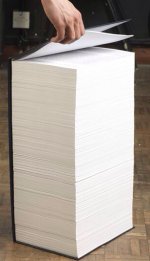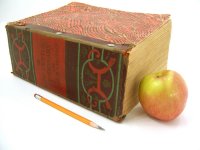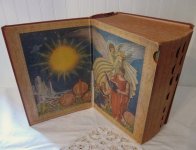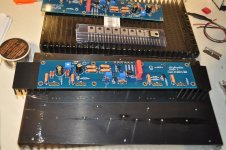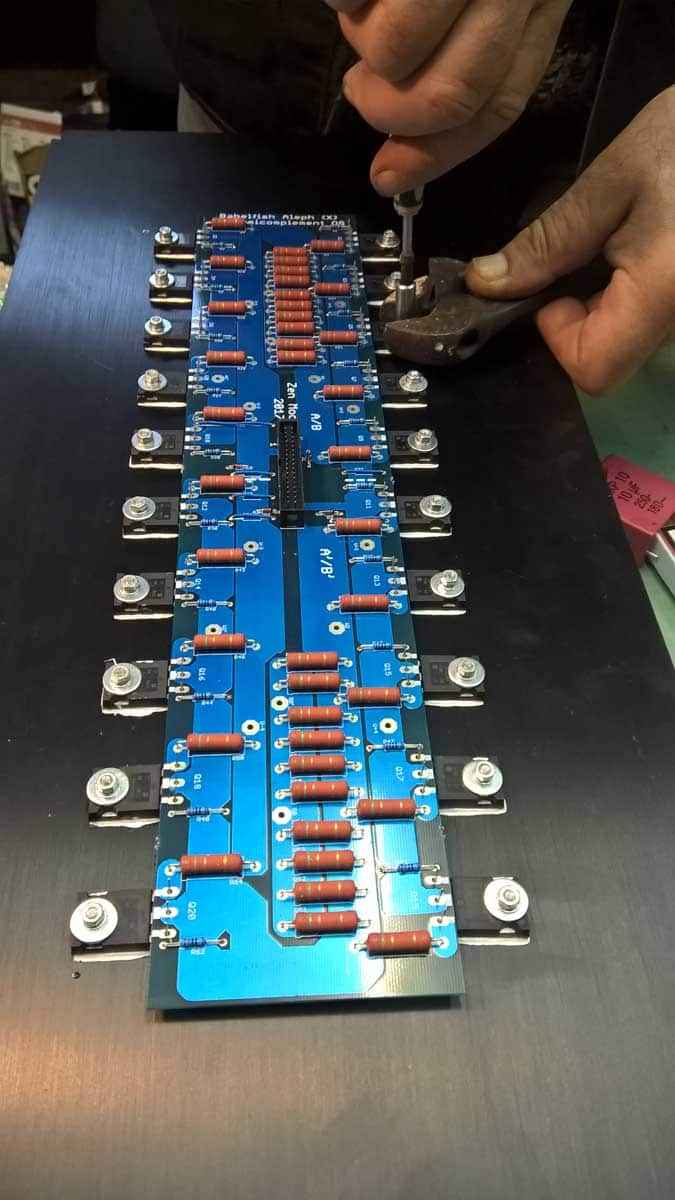The seller isn’t incorrect saying better matching can use smaller source resistors. A bit smaller won’t hurt.
The seller, however, looses some credibility when talking about AB crossover distortion in a single-ended class-A amplifier...
The seller, however, looses some credibility when talking about AB crossover distortion in a single-ended class-A amplifier...
it is a question did seller knew for what mosfets are going to be used 🙂
anyway , just to chime in - I'm using 0R27 in my Babelfish ........ so no biggie changing few things here and there , under condition that you at least partially know what you're doing
Papa is certainly more content with someone making more of his own amp , vs. making Papa's knock-out ; though , his happiness is even greater , less we bother him ..... more time for Papafun ........ (new Papamps, movies , books )
anyway , just to chime in - I'm using 0R27 in my Babelfish ........ so no biggie changing few things here and there , under condition that you at least partially know what you're doing
Papa is certainly more content with someone making more of his own amp , vs. making Papa's knock-out ; though , his happiness is even greater , less we bother him ..... more time for Papafun ........ (new Papamps, movies , books )
it is a question did seller knew for what mosfets are going to be used 🙂
He did know it was for an Aleph build.
"Nelson recommends matching то 100mV. Your mosfets are matched to few milivolts"
Last edited:
Seller talk, but i hope it's pretty good matched!
My pcb is Aleph J from the diy audio store
🙂
My pcb is Aleph J from the diy audio store
🙂
Last edited:
Just finished my first Aleph J build! It isn’t up and running as it’s blowing the .5Amp 250v fuse I had on hand. It did pass the light bulb tester.
Looking at the FirstWatt Aleph J manual it states a 4Amp 250v slow blow so I’m guessing that is what is needed. Is this correct? Anyway had to post a picture, just cause.
Edit: Sorry about the upside down picture, I’m a goof.
Very Nice! Looks great! I love my Aleph J, I’m glad I took 6L6’s suggestion to build it.
........ (new Papamps, movies , books )
+ Papa edition of " Essential Dictionary for DiyAudio Greedy Boyz Vol.1 "
Attachments
I have a question about mounting the mofsets. Is there a best way?
1. Mount them to the board and then make the bends and if so how far do you insert them
2. Mount them to the heatsinks, make the bends and then solder
3.Mount the boards to the heatsink first then make the mofsets fit
thanks
1. Mount them to the board and then make the bends and if so how far do you insert them
2. Mount them to the heatsinks, make the bends and then solder
3.Mount the boards to the heatsink first then make the mofsets fit
thanks
Attachments
If possible mount to the heatsink, bend and solder as last step. So there isn't any mechanical stress on the leads and solder joints.
mount the mosfets but keep them loose until you slide the board over the leads, then tighten them, and then solder them
Not many 3mm screws around here. Hardware store trip tomorrow. Just right tight I suppose and thanks for the tip. This will make the Eikona 2's sing. One more question. Should I use any substance between the heatsink and the mosfets? Thanks
Attachments
Last edited:
Not many 3mm screws around here. Hardware store trip tomorrow. Just right tight I suppose and thanks for the tip. This will make the Eikona 2's sing. One more question. Should I use any substance between the heatsink and the mosfets? Thanks
Why you don't take 4 mm screws? 😉
Should I use any substance between the heatsink and the mosfets? Thanks
You can't just mount them on the heatsink There must be an electrical insulator between MOSFET's and heatsink
So use mica and thermal paste or Keratherm pads:
Keratherm Transistor Insulators – diyAudio Store
M3 is already tapped in Italian factory
tip , important , molto : use stainless steel M3 screws , same as big washer and especially spring washer
only that way you're having all parts in necessary torque range
tip , important , molto : use stainless steel M3 screws , same as big washer and especially spring washer
only that way you're having all parts in necessary torque range
Well I’ve powered up my first Aleph J build. I’m am a bit nervous about the final setup as it’s new territory for me so please excuse my obvious insecurity with these questions.
I’m assuming DC offset is done with the power off, am I correct?
I am getting .1 volt measurement at the output terminals and cannot seem to go lower when adjusting R7 for offset. Does this indicate a problem?
From reading here it seems the lower the bias set the lower wattage the amp puts out and the cooler it runs, would it ok to bias to .30V (or some voltage less than the target .40V) and still have a great sounding Aleph J ?
While powered up I get a reading of 17.44V at the speaker terminals is this in line with expectations?
Thermistors are hot to the touch, is this normal?
Why is R8 a variable resistor and what does it adjust?
Thank you in advance for the help! You guys are the greatest!
I’m assuming DC offset is done with the power off, am I correct?
I am getting .1 volt measurement at the output terminals and cannot seem to go lower when adjusting R7 for offset. Does this indicate a problem?
From reading here it seems the lower the bias set the lower wattage the amp puts out and the cooler it runs, would it ok to bias to .30V (or some voltage less than the target .40V) and still have a great sounding Aleph J ?
While powered up I get a reading of 17.44V at the speaker terminals is this in line with expectations?
Thermistors are hot to the touch, is this normal?
Why is R8 a variable resistor and what does it adjust?
Thank you in advance for the help! You guys are the greatest!
Last edited:
- Home
- Amplifiers
- Pass Labs
- Aleph J illustrated build guide
